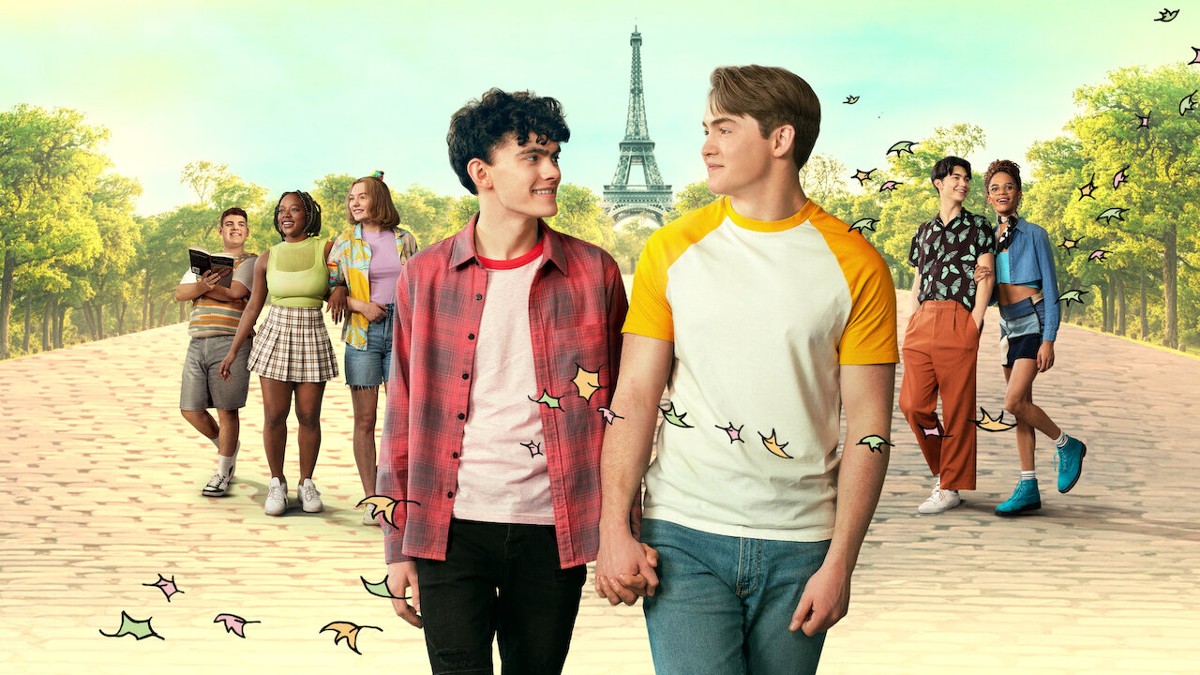How ‘Heartstopper’ season 3 compares to the show’s past critically acclaimed seasons

The highly anticipated third season of Heartstopper recently arrived on Netflix, and viewers will be curious to know how it compares to the show’s other critically acclaimed seasons.
Based on the graphic novel series of the same name by Alice Oseman, the show follows two high school students, Charlie Spring (Joe Locke) and Nick Nelson (Kit Connor), as their friendship blossoms into love. When the series starts, Charlie is navigating a toxic relationship and trauma after being outed as gay to his entire school. However, he soon strikes up a friendship with rugby player Nick. The undeniable chemistry between them eventually leads to Nick becoming aware of his bisexuality. While the show predominantly follows Charlie and Nick, it also follows the stories of their friends, Elle (Yasmin Finney), Tao (William Gao), Tara (Corrina Brown), Darcy (Kizzy Edgell), and Isaac (Toby Donovan), as they navigate love, sexual orientation, gender identity, and family problems.
Heartstopper has received high critical acclaim for its positive representation of the LGBTQ+ community, wholesome depiction of young love, delicate handling of serious subjects, and powerful performances. It manages to capture the realities of discrimination and trauma while also capturing the beauty and wholesomeness of acceptance, friendship, and all kinds of love and relationships. While all of the seasons are very high quality, some of them stand out more than others. Here are all seasons of Heartstopper ranked to the best based on their quality and themes.
Heartstopper season 2
Heartstopper‘s second season is when the show really starts doubling down on its important themes, representation, and relatability. While season 1 was a mostly cheery, nostalgic story about first love, season 2 delves a little deeper into discrimination, family dysfunction, and mental health.
The season sees Nick and Charlie in an official relationship and on their way to Paris for a class trip. However, they are forced to hide their relationship due to Nick not being ready to come out as bisexual and Charlie struggling to open up to Nick about his mental health. Nick’s discomfort is further heightened by visits from his dad and homophobic brother, who do not accept him for who he is. Meanwhile, Tao and Elle discover they have feelings for one another but struggle to make their relationship work, and Isaac feels left out as the only single member of the friend group.
Heartstopper season 2 continues its beautiful exploration of love while also getting realistic about the bullying, trauma, and fear that LGBTQ+ individuals face. It even gives representation to one of the most underrepresented orientations: asexuality. The show also delicately handles topics like eating disorders and abusive family members. Meanwhile, its Paris backdrop keeps the tone light and romantic. The only issue is that the show almost tries to tackle too much during the season by giving every member of the friend group their own separate stories, leading to tonal imbalance and pacing issues. Sometimes, it feels a little too determined to be cheery and upbeat, making some moments feel a bit unrealistic.
Heartstopper season 1
Heartstopper season 1 is about as close to perfection as a TV show season can get. The season follows Nick and Charlie as they grow from deskmates to friends to something more. Despite recognizing their connection, the boys struggle to overcome obstacles as Charlie deals with his abusive ex-boyfriend, and Nick has trouble understanding his identity and feels pressure to come out. Meanwhile, Elle struggles to fit in at her new school and make friends after coming out as transgender, and Tao’s distrust of Nick threatens the friend group’s close bond.
What Heartstopper season 1 does better than any other season is capturing the wholesomeness and beauty of first love. It’s impossible not to feel nostalgic and thoroughly charmed by the blossoming of young love. Locke and Connor are incredible at capturing the shyness, uncertainty, and periods of euphoria when discovering love, while the graphics give the show more of a dream-like feeling. Although the series also accurately captures the profound effects of bullying and non-acceptance, the tone always remains light and contrasts these incidents with beautiful moments of pure acceptance.
The tone, pacing, representation, writing, and acting are superb. However, subsequent seasons of the show demonstrate that season 1 could’ve explored the real-life problems teens deal with a little more deeply.
Heartstopper season 3
Heartstopper season 3 combines the best elements of seasons 1 and 2, resulting in a darker, more thoughtful, and more romantic season than ever before. The season sees Nick and Charlie’s relationship maturing and growing more serious, as does Tao and Elle’s relationship. However, in addition to the students navigating relationships and sexuality and beginning to prepare for the future, they become very concerned as Charlie’s mental health and eating struggles reach new heights.
The show matures, becomes more honest, and explores topics like teenage angst, discrimination, and eating disorders. Viewers alternate between laughing and crying as the season finds the perfect balance between the difficult-to-watch moments and its capturing of the beauty of friendship and love. Not only that, but viewers also get Halloween and Christmas episodes, which not only help get into the holiday spirit but also offer new insight into how these characters and families interact outside of school.
Ultimately, it’s sweet, delicate, representative, emotional, and powerful. It’s pretty much everything viewers hoped for, proving that the show can adapt well to the characters to represent their growth and relationship maturation accurately.
Have a tip we should know? tips@themarysue.com